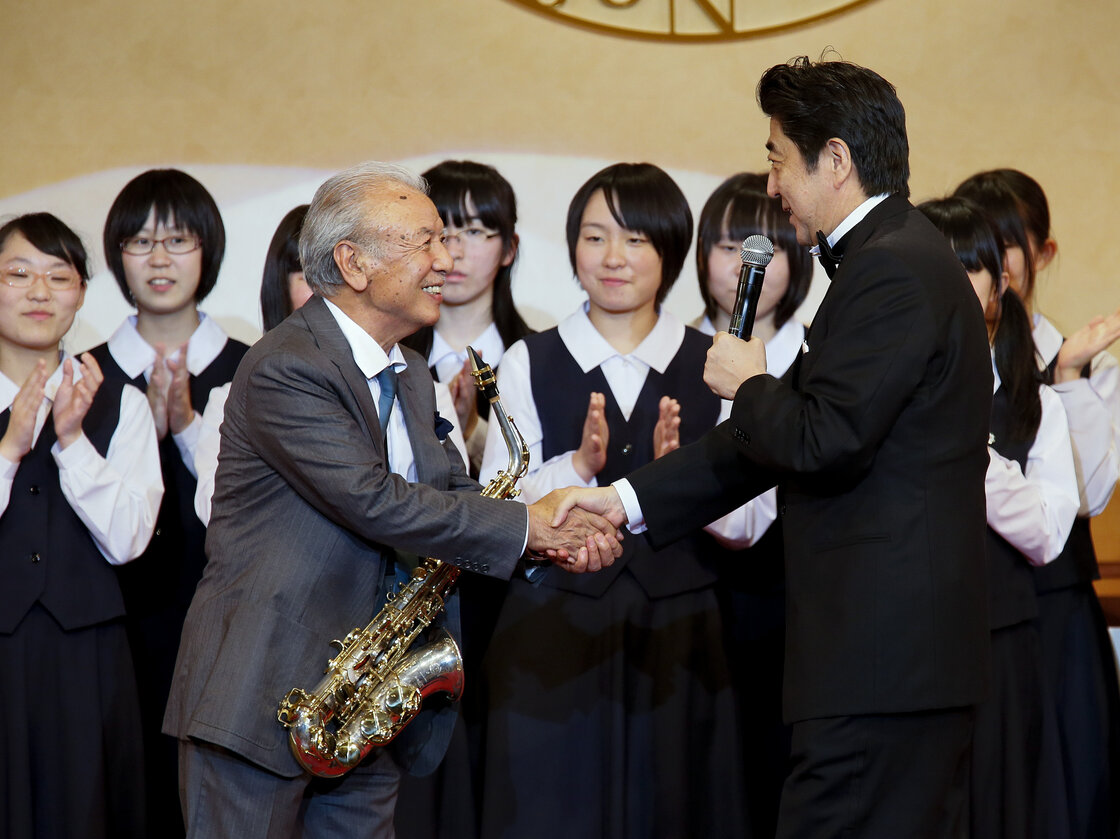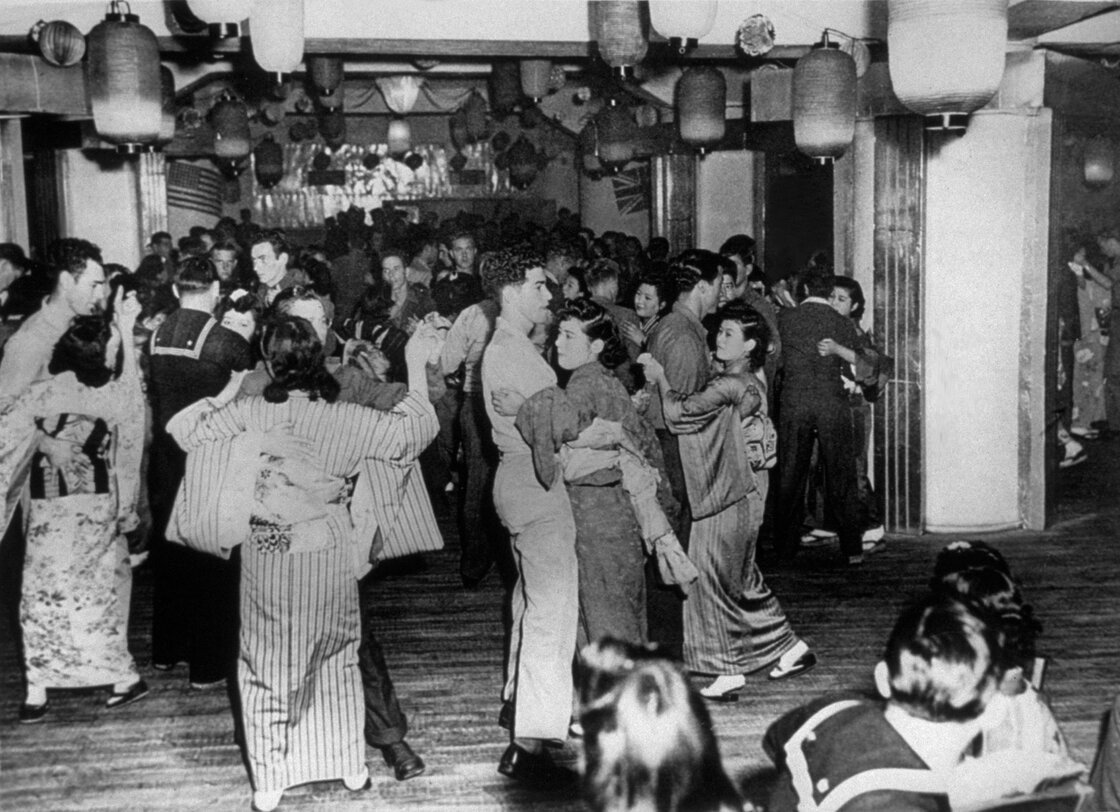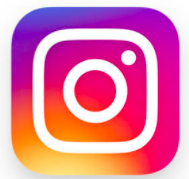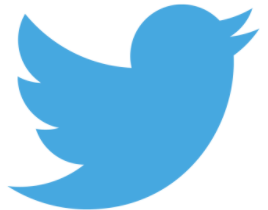
Kimimasa Mayama/AFP/Getty Images
If you’ve witnessed a headlining performance from pianists Toshiko Akiyoshi or , visited a “jazu kissa” where records are spun and coffee poured, or read nearly any work by author , then you probably have a sense that Japan has taken well to jazz music.
Incidentally, the centerpiece Global Concert of this year’s — the annual musical diplomacy initiative from UNESCO and the Thelonious Monk Institute of Jazz — was held today in Osaka, one of Japan’s historical jazz capitals. (As of publication, the should be available shortly.)
So how did this music get to Japan in the first place? How did the island nation which fought the U.S. in WWII come to embrace an art form that originated in black America? And does the history of jazz in Japan actually support the peace-brokering role that UNESCO claims?
For a few answers, and a primer on Japanese jazz history, I gave professor a call. An East Asian historian at Northern Illinois University and an amateur musician, he’s the author of Blue Nippon: Authenticating Jazz in Japan and the editor of Jazz Planet, a collection of essays about jazz outside the U.S. Here’s an edited version of our conversation:

In 2007, bandleader Gerald Wilson presented pianist (and fellow bandleader) Toshiko Akiyoshi with the NEA Jazz Masters award, the highest U.S.-government-supported recognition for jazz artistry.
Bryan Bedder/Getty Images
We often think of jazz as this very American thing — at least for us Americans — but it’s been a very international music from the very start. How did it get to Japan in the very beginning?
Yeah, a couple of different ways. In the 1910s, there was a growth in luxury liners going across the Pacific — Americans and Japanese going across from the West Coast and Japan, and Shanghai and Manila, and places like that. And they usually had orchestras on them. And pretty much it seems like when they arrived in places like San Francisco or Seattle, a lot of the time those musicians would get off and go to music stores and buy sheet music. And they learned a lot of the foxtrot repertoire and other kinds of popular music that was coming out at that time. They were also buying records, and when they would go back, these ocean-liner musicians also worked in hotel lobby orchestras. And so it seems that the first musicians who were playing something that we would recognize as ragtime or foxtrot or jazz were those people. There was precious little improvisation, but that wasn’t as big a deal, as you know, in American jazz of the 1910s or ’20s.
Another thing — and there’s a book waiting to be written about this — is that Filipino musicians were learning jazz, and they played in hotel and ocean-liner orchestras, in Kobe and Osaka and Shanghai and places like that. Because the Philippines were an American colony, supposedly that’s the reason they became so adept at it. Some of the Japanese musicians say the first time they ever heard anybody “faking” or ad-libbing, it was Filipinos.
It eventually must have become more into the popular culture and entertainment rather than, say, the hotel lobbies.
Yes. With the beginning of the popular music recording industry in the ’20s, one of the first big records was “My Blue Heaven,” and “The Sheik of Araby,” and songs like that. They made Japanese versions of those, sometimes with translated lyrics, and with some of those same pioneering musicians being in the studio bands.
So the first time a lot of people hear the word “jazz” is in 1929, in a popular song attached to a movie called Tokyo March. The lyrics refer to jazz, and … that’s sort of where it came into mass consciousness. It was associated with dance halls, it was associated with “modern girls” and “modern boys” — the Japanese version of flappers and dandies — and the urban leisure classes: excess, and dogs and cats sleeping together, and all those sorts of portents of future calamity. [Laughs.]
There must have been some particular economic realities that dictated the development of jazz in Japan. Like, one of the points that’s made in your book is that musicians that were in the dance halls were paid by the song, so they were encouraged to write shorter songs.
Yes, they’d play shorter arrangements and they wouldn’t blow extended solos. The reason for that was to keep selling tickets with which a male patron could dance with a female . And the shorter the songs, the more tickets were sold, the more individual dances were done. So that had an impact on the music.
The fact that the Columbia and Victor recording companies both opened subsidiary companies in Japan which issue a lot of the jazz recordings — either the ones made in the U.S. and imported, or the ones that feature Japanese artists — that has a lot to do with it, as well. And because Tokyo has this catastrophic earthquake in 1923, a lot of the musicians and entertainers move out to the West, to Osaka and Kobe. So until the end of the 1920s, a lot of the action was happening there while Tokyo was rebuilding.
Who did it catch on with at first? I mean, who was the core audience? Was it people who were out for dancing, and they heard this new, catchy rhythmic identity from abroad? Or was it also perhaps how hip-hop is embraced by underprivileged or subaltern cultures worldwide today? Was there an element of that going on?
No. For all the efforts during the Cold War to identify jazz with the underprivileged — I mean, it may have originated among underprivileged people in New Orleans, but it doesn’t stay there. In fact, in most places [worldwide], it becomes the music of young, urban, middle-class or upper-middle-class people who have access to phonographs, access to the latest fashions, who go to cafes, buy records, listen to the radio, go to dance halls, go to movies, sporting events, stuff like that. It’s one of a number of so-called modern entertainments available to them. And they have a very strong consciousness of participating in what they believed was a global cultural wave or movement.
So people that didn’t even really like the music — you know, social critics or music critics — were saying, ‘We need to know something about this, even if it’s a lower form of music than Western art music.’ But it didn’t reach the rural masses in any particular way, and didn’t really appeal to them. As a matter of fact, right-wingers who would say that they were championing the cause of those common people would often seize upon it and say, ‘Look, these urbanites — one of the things that they do is listen to jazz, and it’s another way that they’re disconnected from you.’
I would imagine there would be some sort of — I don’t know if the correct word is “nativist,” but some sort of official cultural backlash to this cosmopolitan idea, especially as Japan enters WWII, and the enemy is the Americans.
There’s a strong component of that, and it certainly becomes stronger as it enters the ’30s and ’40s. But I would say that hostile reactions to jazz initially in the 1920s comes not from nativists, but from the so-called music establishment. People who were published or wrote about music, people who were involved with Western classical music. And when they would object to jazz and say it was inferior, that’s what they would compare it to. They weren’t comparing it to any Japanese traditions.
Same as it was anywhere, I suppose.
Yep.
After WWII, the floodgates seemed to open a bit for jazz across the Pacific. What factors would you say contributed to that?
Yes. Well, again, if you go back to an economic reason, there were thousands of American troops stationed in Japan who wanted live music, who wanted to be entertained. There were musicians among them, but they weren’t enough to actually fill up a dance-hall orchestra or club. And so they would hire Japanese musicians. It was one of the safer kinds of employment, at least for people who had some musical talent at all. In the [American] occupation years, there was a lot of widespread unemployment, and musicians did pretty well because they could get these gigs. I tell, in the book, of stories where Army trucks ride up to train stations or somewhere where musicians hang out, and saying, ‘OK, we need a couple clarinets, a trombone, a drummer.’ People would pile in and then they’d go to the gig. And then there were some of the officers’ clubs, where they might have a stable band that would be playing on a regular basis. Basically, the Army gave them stock arrangements: ‘Learn these! Play these!’ And that’s really where they would go.

U.S. servicemen and their Japanese partners dance to jazz tunes in the newly opened Tokyo nightclub Oasis of the Ginza, circa 1945.
Keystone/Getty Images
You also begin to see Japanese musicians in the ’50s and ’60s even make an impression on U.S. audiences. The biggest name would probably be [pianist] Toshiko Akiyoshi, but perhaps you could identify some of these early pioneers, and what’s interesting about their stories?
Well, Akiyoshi is obviously the most high-profile, and the most compelling story. She was one of a very small handful of artists who insisted on playing bebop only, who didn’t want to have a vocalist, who would argue with club owners about what kind of music she would present. She was very uncompromising about that. And bebop wasn’t necessarily that popular among Army officers, either, but there were black officers’ clubs where people there were more interested in bebop than in dance music. And [American musicians] like Hampton Hawes were there then, Ed Thigpen — and they would sometimes play. Sadao Watanabe, the famous alto player in Akiyoshi’s band in the early ’50s, would sometimes play. He wound up following in her footsteps to Berklee [College of Music], but it was about 10 years later.
The way that a lot of these musicians came to be known to Americans is through occupation clubs and meeting American musicians who were enlisted. There was another guy named “Sleepy” Matsumoto who got his name because he, like a lot of musicians at the time, was doing heroin, and so had this sleepy look on his face. But he was a really good [tenor saxophone] player; people respected him.
As this robust Japanese jazz musician scene forms, one would imagine — and you spend a lot of time in your book dealing with this — that musicians themselves, and cultural commentators around them, would start wrestling with the idea of authenticity, right? Of thinking that they or Japanese musicians were outsiders. Where does this criticism arise from?
I think that even though I trace authenticity as being something important to [Japanese jazz musicians] before the war, I think it really becomes an issue and a pain in the late ’40s and all through the ’50s, and maybe even into the early ’60s. A lot of it had to do with jazz critics themselves, people who were writing for Swing Journal [the leading Japanese jazz periodical]. They would make comparisons, say, ‘George Kawaguchi is the Japanese Gene Krupa.’ They would make these comparisons all the time, trying to make sense of what these musicians were doing.
But there’s evidence that the musicians were doing this themselves. You know, ‘I’m so-and-so, and I imitate so-and-so, from the States. Who do you imitate?’ And they know the whole time; they think of it as being a sort of necessary stage that every artist goes through in their development. But then it just seems to persist, and it’s not until the early ’60s that people start saying, ‘OK, now we need to break away from this.’ There’s been at least a generation of jazz artists who are still making claims without any particular shame that they’re studying and emulating one person. And it’s something that comes to be reinforced as part of their subculture of jazz.
Like I said, I think the critics don’t help. As you’re familiar with, critics inventing categories like “East Coast” and “West Coast” — jazz critics in Japan pretty much did the same thing. They even said at one point, ‘Well, Tokyo is more like the East Coast of America, and Osaka is more like the West Coast.’ Stuff like this where they’re trying to make sense of the scene, but doing so in a really kind of ham-fisted way that wasn’t doing justice to the actual music that was going on.
I presume that in the struggle to differentiate themselves within American audiences, or come to grips with having some sort of post-imitative style, certain Japanese jazz musicians would start looking for conscious exoticisms, or particularly Japanese references in their music.
Absolutely. A couple of examples come to mind immediately. There’s a drummer named Hideo Shiraki, who is sort of known as a hard bop drummer. He did a record in 1961 with a koto player on a couple of songs. And then four or five years later, he went to Berlin and played a concert with his quartet and three female koto players. This was a sensation, and people were really crazy about it, because it seemed to be this nice fusion. This was one of the reasons they were asked to come out in the first place — if they had gone out and played their normal club repertoire, the question would have been, “Well, why didn’t we just get some Americans to do this?”
The other example is 1967 — the Sharps and Flats Big Band goes to Newport [Jazz Festival], which was a really big deal. [Newport] commissions a bunch of arrangements of Japanese folk songs, and that was their whole program. Nobuo Hara [the bandleader] was asked about this in the Western press, and said, ‘We normally play Woody Herman and Count Basie at home, but we go out to the United States — what’s the point? They still have Basie, they still have Herman.’
So it’s a relatively easy way for them to be noticeable individuals. To some degree, Akiyoshi does this, too, but she doesn’t do it for the same reasons. She doesn’t have the same immediate incentive that these people did — she’s thinking more of building a book of compositions, and she doesn’t rely exclusively on traditional Japanese instruments, or timbres, or themes, or something like that. That’s part of what she does, but it’s not the entirety of the work that she does. It does play a role in getting her noticed, but there are other things about her work that don’t really have any noticeable exotic Japanese touches about them.
How would you describe the embrace of jazz in Japan in the present day? Is it still the same young, cosmopolitan thing — is it part of popular culture at all? Is it kind of an alternative thing to do?
Yeah, it’s kind of an alternative thing to do. It has this cachet of being hip and sophisticated. There are varying levels and degrees of engagement where some people engage in it as a hobby where they collect recordings and either listen really deeply to them or just play them in the background. When I was there last year, I was interviewed by a couple of guys, and they said everybody learns about jazz when they’re in college. And I think that used to be the case for their generation in the ’60s, but I don’t think that’s the case right now. I think people have to dig a little harder to be exposed to it, but once they get it, they can become some of the most well-informed, passionate fans of the music in the world. They’re not all like that, but when they are, they really are. It’s actually really inspiring to see how much it means — some of the best friendships I have there are made from this mutual enthusiasm for jazz, and it means something really special to them. It’s not just a superficial appendage — it affects a lot of parts of their lives.

So my standard answer to this question is that it’s not really widely popular, like, you don’t see it on television very much. There’s a weekly program on NHK Radio [the Japanese public broadcaster] which features jazz, but that’s really the only radio station that does that. But the fans that are there are very knowledgeable, very enthusiastic. They’re real supporters — they’ll go to great length sometimes to expose other people to the music. They take it very seriously.
To back up, UNESCO’s rationale for having such a thing as International Jazz Day rests a little bit upon jazz as representing freedom among oppressed people worldwide. In your writing about jazz in Japan, it’s not really about that.
No.
What else would it be about?
Oh, boy, that’s a good question. Well, I think the line that’s out there, that jazz represents freedom for everyone, is baloney. I think [that statement] is very much tied to its American origin, to American power in the world. I think that, however much I love jazz, I think that if Portugal had as much influence in the world, fado would probably be “the jazz” of the world. There’s a certain sense in which a lot of Americans believe that the rest of the world really wants what we have — they’re all Americans deep down — and I don’t subscribe to that way of thinking.
That said, I think jazz can mean freedom to some people. People in the Soviet Bloc that listened to it on Willis Conover’s [Voice of America radio] show — I think it did represent that to them, and I think it represented something different from the stifling existence in which they lived. But it also can mean something that’s less universal. It can be a sort of Afro-logic, or African Diaspora sort of sensibility. Or other areas where people incorporate their own ethnic music into jazz, they’ll say it represents their national spirit. You’ll have people who say, ‘Yes, it comes from America, but it belongs to everyone now, and when we add our own things to it, it belongs to us.’
I think there’s something to be said — you know, a lot of people identify with it not because it represents freedom, but because it represents power, or strength, or ability, or something like that.
Finally, is there anything else that you feel is important to communicate about how jazz in Japan has played out? Is there even such a thing as “Japanese jazz”?

Well, I don’t think there’s such a thing as Japanese jazz in the sense of something that represents a cultural essential or spirit or something like that. One of the interesting things — some of the people most interested in using Japanese instruments and repertoire are not Japanese themselves.
But I think it’s no longer surprising to people, as it was a generation ago, for Japan to produce outstanding jazz musicians. There’s the guy who has a Blue Note contract now…
Takuya Kuroda.
Yes, Kuroda, and there’s Hiromi Uehara, the pianist who’s really, really doing well. There’s still the tendency that once they go over really big in the States, they become celebrities in Japan. But I don’t think the rest of the world is that surprised that Japan can really turn out these artists. There’s not that same kind of stigma that’s attached to them.
Patrick Jarenwattananon




